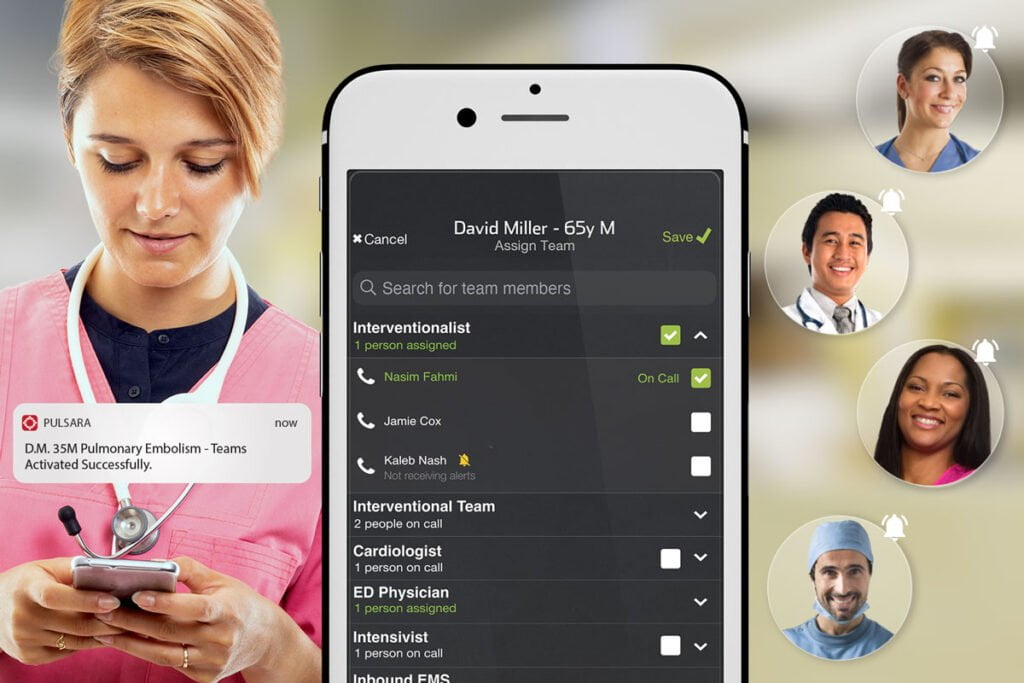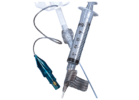Pulsara Releases New Suite of Patient Types for Improved Patient Care Coordination
Pulsara, the leading mobile telehealth, communication, and logistics platform that unites healthcare teams and technologies across organizations during dynamic events, recently released six new patient types that connect distributed teams on a single flexible and scalable platform. From prehospital care to the many in-hospital teams and specialists, the new functionalities unite care teams around each unique patient case, enabling reduced treatment times, improved team collaboration, and streamlined transfers.
“Pulsara’s platform allows flexible interactions in and across any organization, enabling access to the people you need, right when you need them,” said Kate Leatherby, Regional Vice President (U.S. West) at Pulsara. “This capability is truly invaluable for all care teams. For any patient type, care team communication and collaboration are improved—and patient care is invariably improved in the process.”
Pulsara recently released six new patient types—behavioral health, obstetrics, and toxicology/overdose, which were previously reported on, as well as surgical emergency, pulmonary embolism, and shock/ECMO. These new functionalities expand the power of the platform and improve support and care coordination for additional types of patients. Each of these patient types allows clinicians to match their patients with the appropriate care teams and specialized resources through flexible and scalable interactions as the patient case evolves. Clinicians can leverage Pulsara’s telehealth video calling and photo sharing functionality to consult with other clinicians, determine the most appropriate disposition, and guarantee follow-up in the process.

Using Pulsara’s surgical emergency patient type, surgical teams have the ability to communicate with the rest of their team in real time and coordinate appropriate timing based on ETAs and available services and/or specialists. From transfer center agents and specialty surgeons to house supervisors and surgical technicians, everyone is informed during the entire patient care journey.
When pulmonary embolism care teams need extra guidance or resources, Pulsara is the lifeline of communication across organizations. Clinicians can quickly and easily add new teams or resources on the fly, like interventional radiology or an intensivist for a virtual consult. In cases where patients need to be transferred for emergent or specialized care, Pulsara helps clinicians quickly find the most suitable placement while eliminating unnecessary phone calls. With Pulsara, sending and receiving facilities—as well as transporting EMS—are all on the same page, even with ETAs and changes in patient condition during the process.
Pulsara’s shock/ECMO patient type enables flexible and scalable interactions around urgent or emergent care for the condition. Clinicians can quickly add new teams or resources on the fly like interventional cardiology, intensivists, or ECMO specialists—or even transport to another facility for a higher level of care. Supporting efficient identification and coordination, Pulsara allows teams to share critical images and videos easily, and even consult with other clinicians internally or across organizations via HIPAA-compliant texting, calling, or video chat.
Nearly a dozen patient types now make up Pulsara’s patient type portfolio, helping improve and streamline care coordination even further. In addition to the functionalities mentioned earlier, other patient types included with the platform include stroke, STEMI, trauma, sepsis, and sudden cardiac arrest. A “general” patient type is also included, giving care teams the ability to handle any desired workflow and have additional flexibility around unique patient types or more dynamic cases.
“Improving the lives of people in need and those who serve them is our purpose at Pulsara,” shared Dr. James Woodson, Founder and CEO of Pulsara. “The value of Pulsara’s additional patient types extends across the entire healthcare continuum, from EMS and emergency departments to OB teams or surgical teams—every care team for every patient type along the whole patient journey. We are thrilled to be adding this new functionality in support of both patients and caregivers.”
About Pulsara
It’s about people. During the most critical moments in life, Pulsara unites distributed teams and fragmented technologies as dynamic events evolve on a scalable communications and logistics platform, improving the lives of people in need and those who serve them.
We envision a world where needless suffering is eliminated because communities can unite and communicate without friction. Studies report an average decreased treatment time of approximately 30% when using Pulsara, the evidence-based standard of care. For more information, visit www.pulsara.com.
















